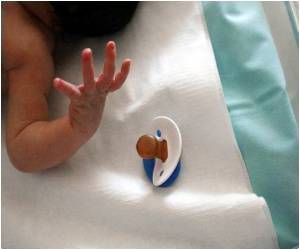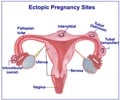New insight into how much oxygen preterm infants should receive as well as the optimal way to deliver it to them has been provided by a national study

"Our findings show that the patients who received the CPAP treatment required intubation less often both in the delivery room and neonatal intensive care unit. They also spent less time on ventilators and received fewer steroid drugs after birth," said Dr. Pablo Sanchez, professor of pediatrics at UT Southwestern and an author of the study available online and in the New England Journal of Medicine. "This tells us that CPAP may be a viable alternative to routine intubation and surfactant administration in babies born prematurely."
Because their lungs are not fully developed, preterm infants run the risk of developing respiratory distress syndrome (RDS). The lungs of infants with RDS fail to produce enough surfactant, a substance that allows the inner surface of the lungs to expand when the infant moves from the womb to breathing air. Although many preterm babies who are unable to produce surfactant must be put on a ventilator to breathe, the use of artificial surfactant has been shown to reduce the amount of time an infant requires a breathing machine.
The standard ventilator therapy involves placing a breathing tube in an infant's windpipe to provide both oxygen and surfactant. Surfactant can not be delivered with CPAP.
For the study, the researchers – members of the Neonatal Research Network – randomly assigned 1,316 preterm infants born between February 2005 and February 2009 to receive one of two treatments: intubation and surfactant treatment within an hour of birth, or CPAP treatment in the delivery room followed by limited ventilation for two weeks. The infants, born between 24 weeks and 27 weeks, 6 days of gestation, also were assigned randomly to receive one of two ranges of oxygen saturation – either 85 percent to 89 percent in the babies' blood, or 91 percent to 95 percent in the babies' blood.
Infants treated with CPAP fared better, requiring less frequent intubation as well as fewer days on a ventilator, the researchers reported. The rate of bronchopulmonary dysplasia (BPD) or death, however, did not differ significantly between the two groups. BPD – defined as the need for oxygen at 36 weeks postmenstrual age – is characterized by inflammation and scarring in the lungs and develops most often in preterm babies.
Advertisement
Preterm infants in the study who were in the lower blood oxygen saturation group did not have significantly less severe retinopathy of prematurity or death, but death before nursery discharge occurred more frequently. Among survivors, however, the risk of severe retinopathy was lowest among the babies who achieved between 85 percent and 89 percent oxygen saturation in their blood. Dr. Sanchez said that the increase in mortality is a serious concern, particularly because some physicians are advocating for lower oxygen saturation levels as a way to prevent eye disease.
Advertisement
Source-Eurekalert









